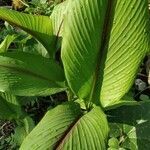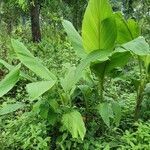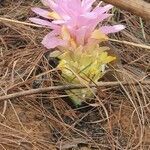| Therapeutic use
|
Bronchitis (unspecified), Insecticides (leaf), Abdominal pain (rhizome), Analgesics (rhizome), Anthelmintics (rhizome), Anti-bacterial agents (rhizome), Antidepressive agents (rhizome), Antidotes (rhizome), Antifungal agents (rhizome), Anti-infective agents (rhizome), Anti-infective agents, local (rhizome), Antimutagenic agents (rhizome), Antineoplastic agents (rhizome), Antipyretics (rhizome), Antitubercular agents (rhizome), Appetite stimulants (rhizome), Arthritis (rhizome), Asthma (rhizome), Bronchitis (rhizome), Candidiasis, cutaneous (rhizome), Central nervous system depressants (rhizome), Common cold (rhizome), Conjunctivitis (rhizome), Contusions (rhizome), Convalescence (rhizome), Cough (rhizome), Demulcents (rhizome), Diarrhea (rhizome), Diarrhea, infantile (rhizome), Diuretics (rhizome), Dyspnea (rhizome), Expectorants (rhizome), Fever (rhizome), Flatulence (rhizome), Fractures, bone (rhizome), Furunculosis (rhizome), Gastrointestinal diseases (rhizome), Goiter (rhizome), Halitosis (rhizome), Heart diseases (rhizome), Hematologic diseases (rhizome), Hematoma (rhizome), Hemorrhage (rhizome), Hemorrhoids (rhizome), Hiccup (rhizome), Hypersensitivity (rhizome), Jaundice (rhizome), Leprosy (rhizome), Mastodynia (rhizome), Nootropic agents (rhizome), Pain (rhizome), Parasympatholytics (rhizome), Pneumonia (rhizome), General tonic for rejuvenation (rhizome), Skin diseases (rhizome), Splenic diseases (rhizome), Splenomegaly (rhizome), Stomach diseases (rhizome), Stomatitis (rhizome), Tinea (rhizome), Wounds and injuries (rhizome), Cooling effect on body (rhizome), Abdominal pain (root), Antiprotozoal agents (root), Liver diseases (root), Anti-bacterial agents (tuber), Antifungal agents (tuber), Insecticides (tuber), Bruise (unspecified), Carminative (unspecified), Dyspepsia (unspecified), Hepatomegaly (unspecified), Liqueur (unspecified), Lymphadenitis (unspecified), Neophasia (unspecified), Splenomegaly (unspecified), Stomachic (unspecified), Tonic (unspecified), Tumor(Liver) (unspecified), Colic (unspecified), Parturition (unspecified), Stimulant (unspecified), Antidote (unspecified), Cold (unspecified), Convalescence (unspecified), Sprain (unspecified), Tumor (unspecified), Cancer(Stomach) (unspecified), Anthelmintics (unspecified), Appetite stimulants (unspecified), Common cold (unspecified), Contusions (unspecified), Cough (unspecified), Demulcents (unspecified), Diuretics (unspecified), Edema (unspecified), Expectorants (unspecified), Fever (unspecified), Flatulence (unspecified), Insecticides (unspecified), Leprosy (unspecified), Liver diseases (unspecified), Pregnancy complications (unspecified), General tonic for rejuvenation (unspecified), Scorpion stings (unspecified), Skin diseases (unspecified), Snake bites (unspecified), Sprains and strains (unspecified), Antifungal agents (whole plant)
|



